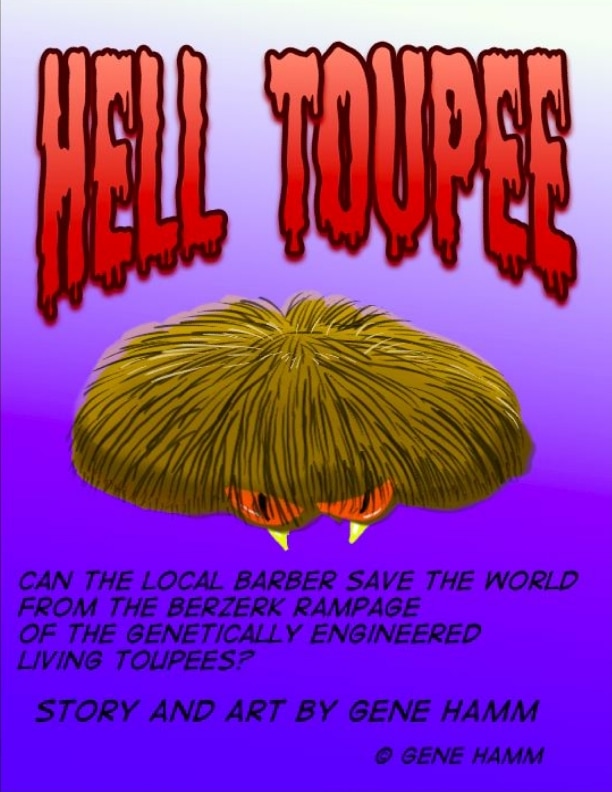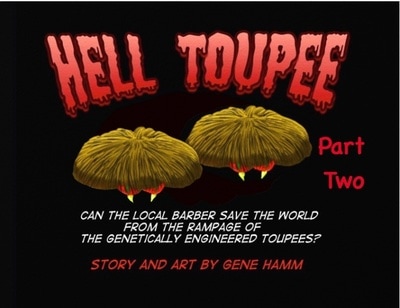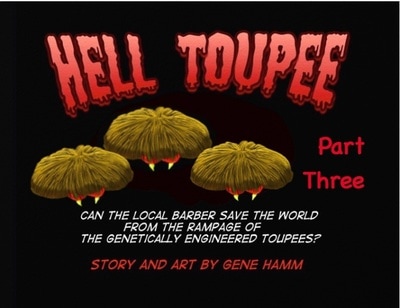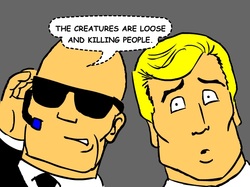He drew adaptations of movies such as John Paul Jones, Yellowstone Kelly, Son of Flubber, Mary Poppins, Mutiny On The Bounty and Atlantis The Lost Continent.
What I loved about his comics were the accuracy. Maverick looked like James Garner. The Rifleman looked like Chuck Connors. Lawman looked like John Russell. The props looked right too. He got the Rifleman's rifle right and Johnny RIngo's seven shooter. The cars and Thompson submachine guns looked right in The Untouchables. Black Beauty and the stinger looked right in The Green Hornet. When the aliens died and immolated in a red mist, it looked just like they did in The Invaders.
Sometimes his comics were way better than the TV shows or movies he adapted to comics. His Sea Hunt was way more exciting than Lloyd Bridges TV show. Since he did such a good job on two of Warner Brothers TV shows: Maverick and Lawman, I wish he could have done other Warner Brothers TV shows such as 77 Sunset Strip, Hawaiian Eye and Cheyenne. (But Alex Toth and Russ Manning did a great job on 77 Sunset Strip. Toth also did a good job on Sugarfoot. Whoever drew Cheyenne did an awful job. It didn't look like Clint Walker). Indirectly Spiegle got another crack at it when he illustrated Yellow Stone Kelly and did an accurate job of portraying Clint Walker and Edd Byrnes (from 77 Sunset Strip).
Rarely would Spiegle get it wrong. In John Paul Jones, his drawings of Robert Stack looked more like James Garner, but he got it right when a few years later he drew Eliot Ness. It looked exactly like Stack.
I learned to draw scenery from Spiegle. I still draw hills and cliffs, trees and oceans with him in mind.
He also did comics that weren't based on TV, such as Space Family Robinson and Korak Son of Tarzan.
Unlike Marvel, who gave credit to their artists such as Jack Kirby and Steve Ditko, Dell didn't let their artists sign their work for a long time. I guess they were afraid if they got a following, they would ask for more money. I could alwaysrecognize Speigle's style though I didn't know his name. Later they let him sign "DS". Still later he signed "Dan Spiegle". Around 1971 I tried to get a job at Dell drawing comics. I talked to Chase Craig, Spiegle's editor. I didn't get the job, but during the interview, behind Chase Craig were original panels by Dan Spiegle of Korak Son of Tarzan. I asked for Dan Speigle's address and Craig gave it to me. Then I became pen pals with my hero.
He had an avocado ranch in Carpinteria, California, right next to Santa Barbara. I visited him three times. He was always an affable friendly man who encouraged me. And he always gave me a basket of avocados when I left. The last time I saw him, his wife Marie served me a slice of homemade cherry pie. Spiegle showed me his "morgue" where he had clippings of magazines of people, places and things to draw from. That was why his comics were so accurate. He told me when he got busy, his daughter inked his pencil drawings. He told me when he was assigned the job to draw Maverick, there were no photographs to draw from so they brought him to the studio to draw James Garner on the set. Garner was in the jail cell in that scene and between takes let Spiegle draw him. He said Garner was friendly and very nice to him.
Dan Spiegle drew a lot more comics than I have mentioned here, (such as the marvelous Crossfire), but the ones that really influenced me were the TV and movie adaptations. I am sorry he is gone. But he lived a long life. He made it to 96. He played tennis into his 80's. There will never be another comic artist like him.





 RSS Feed
RSS Feed
